Bee Flies
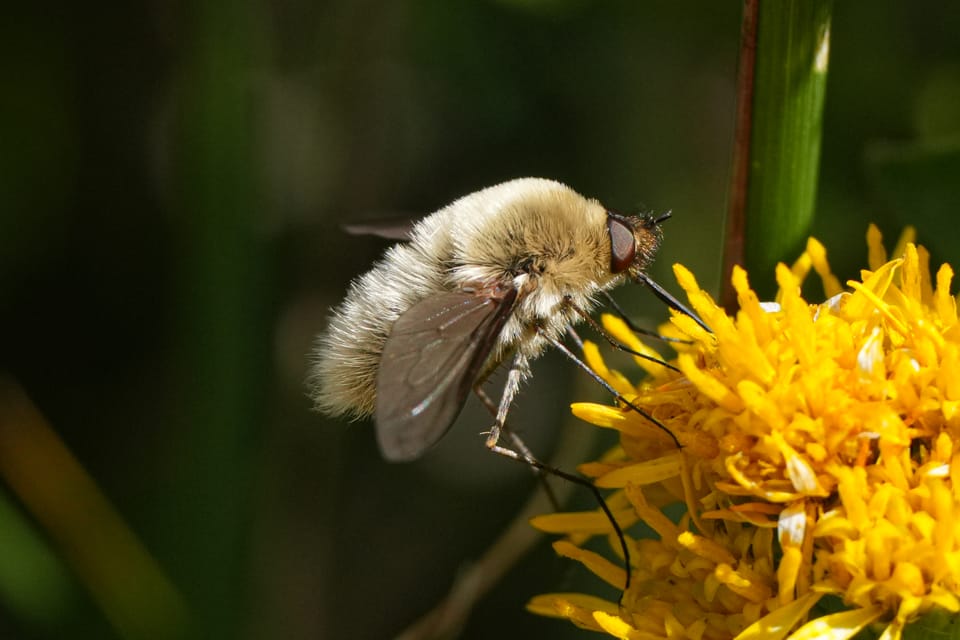
Today's topic is not merely a play on words, it's the actual name of an overlooked, but surprisingly important, group of insects.
Even if you don't know it, you've almost certainly seen bee flies. These plump little insects are common flower visitors, especially in open, sunnier habitats, but you might have missed them because many species look and sound like fuzzy bees, while other species resemble colorful flies like hover flies (see my recent newsletter on hover flies here).
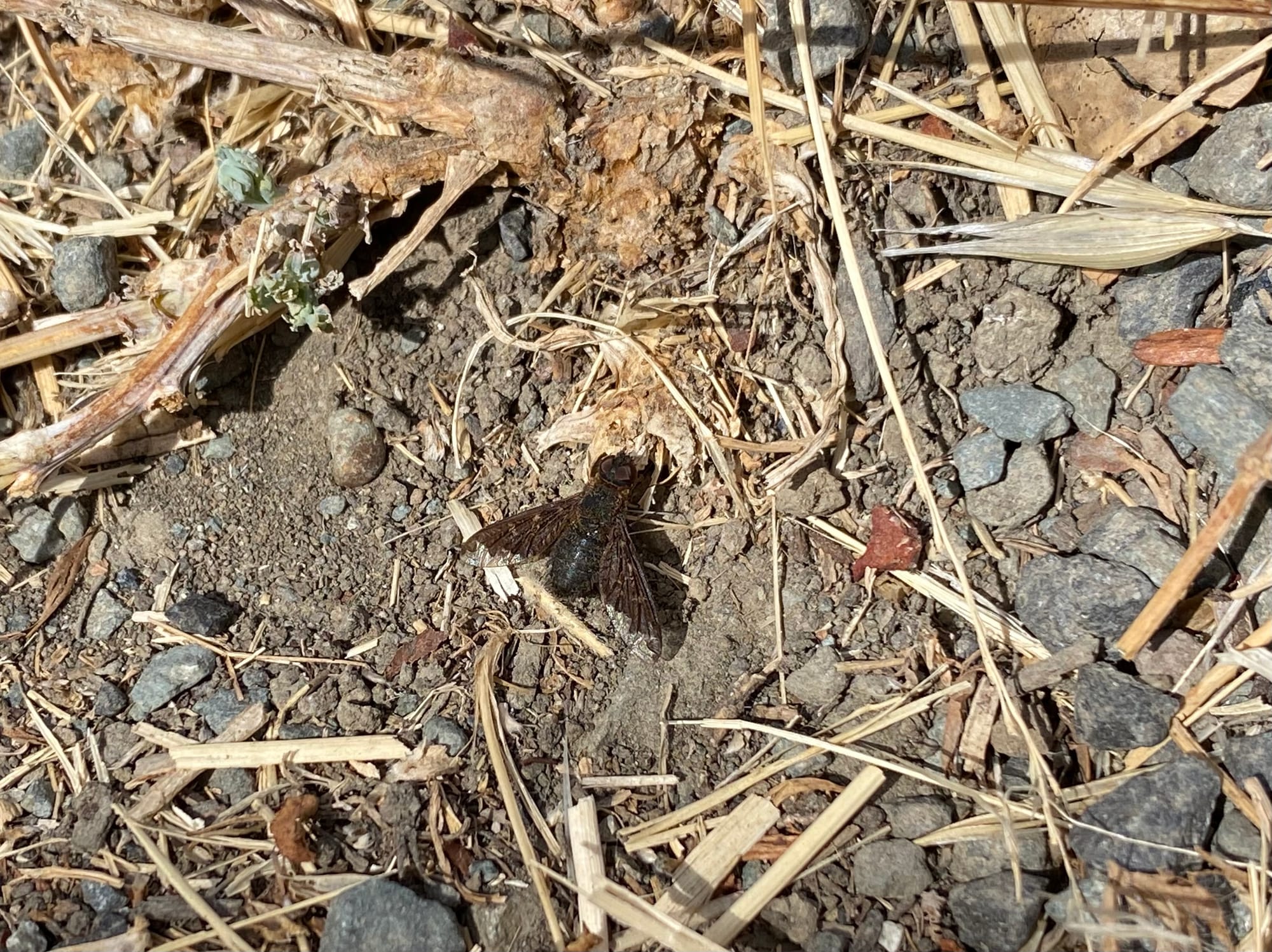
Bee flies are actually a very large family of flies, with over 4700 known species and thousands more awaiting discovery. All bee flies are thought to be important pollinators, yet only a handful of species have been studied and almost nothing is known about the vast majority of the world's bee flies.
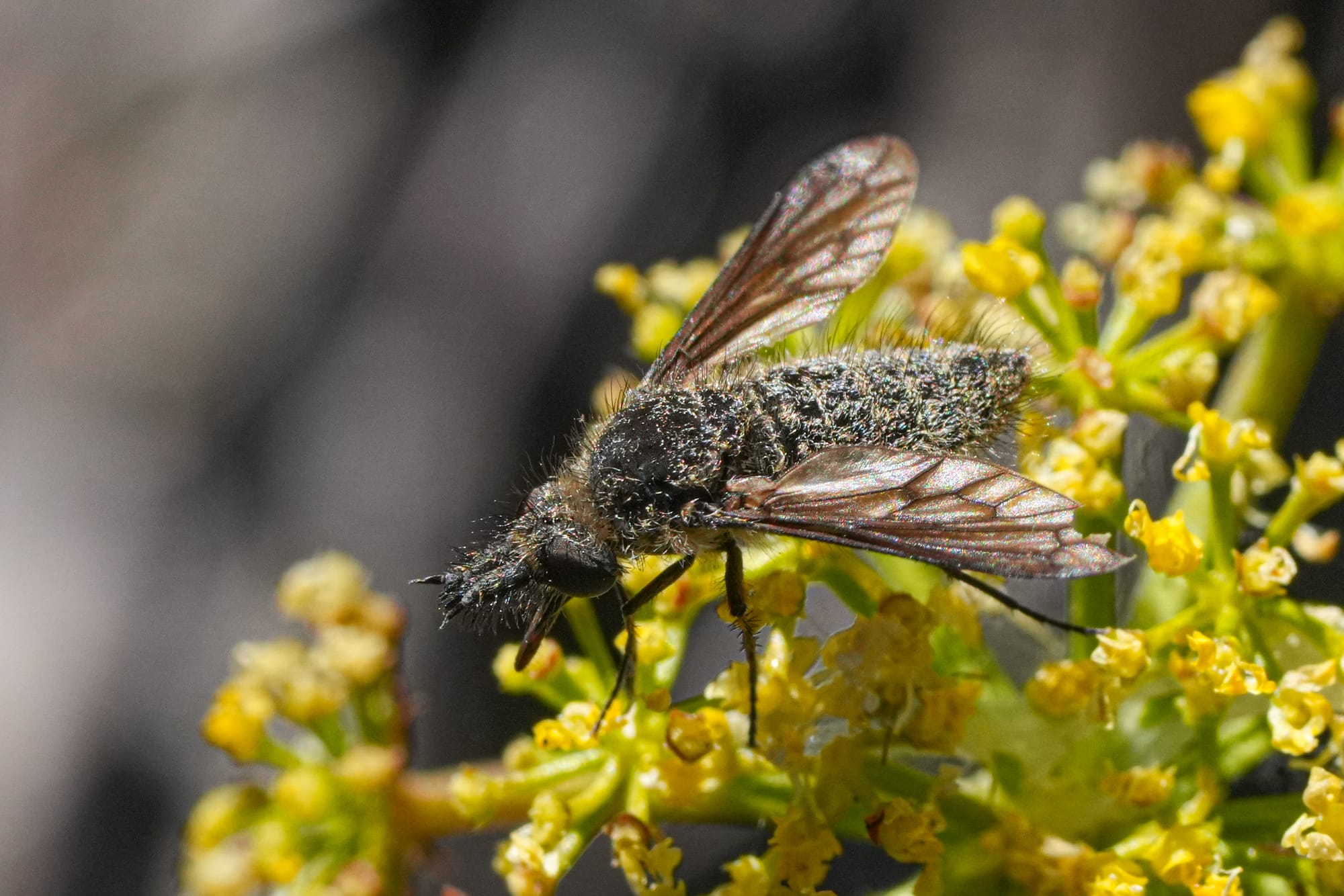
In terms of pollination, bee flies fill the same role as bees and butterflies, visiting many flowers in search of pollen and nectar, and carrying pollen from flower to flower on their hairy bodies. However, unlike bees and butterflies, their value as pollinators has been greatly underestimated and leading pollination studies have excluded bee flies because they are hard to identify and researchers have assumed they are unimportant.
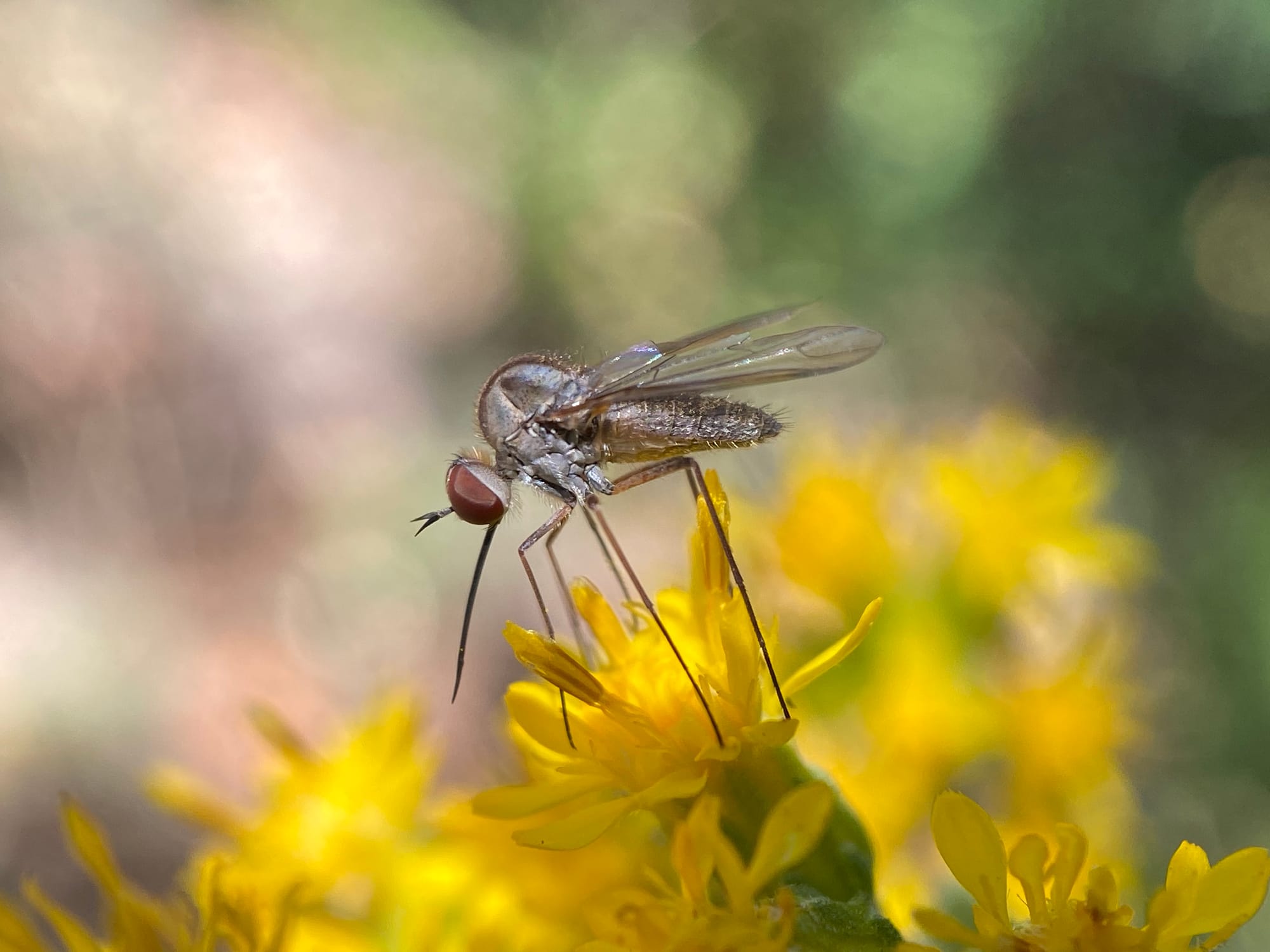
This narrative is now shifting as native bee populations plummet and the pollination services of flies are coming into sharper focus. So far, hover flies have been getting all the attention, but bee flies carry as much pollen as hover flies and they are probably even more important in the semi-arid habitats and Mediterranean zones they favor.
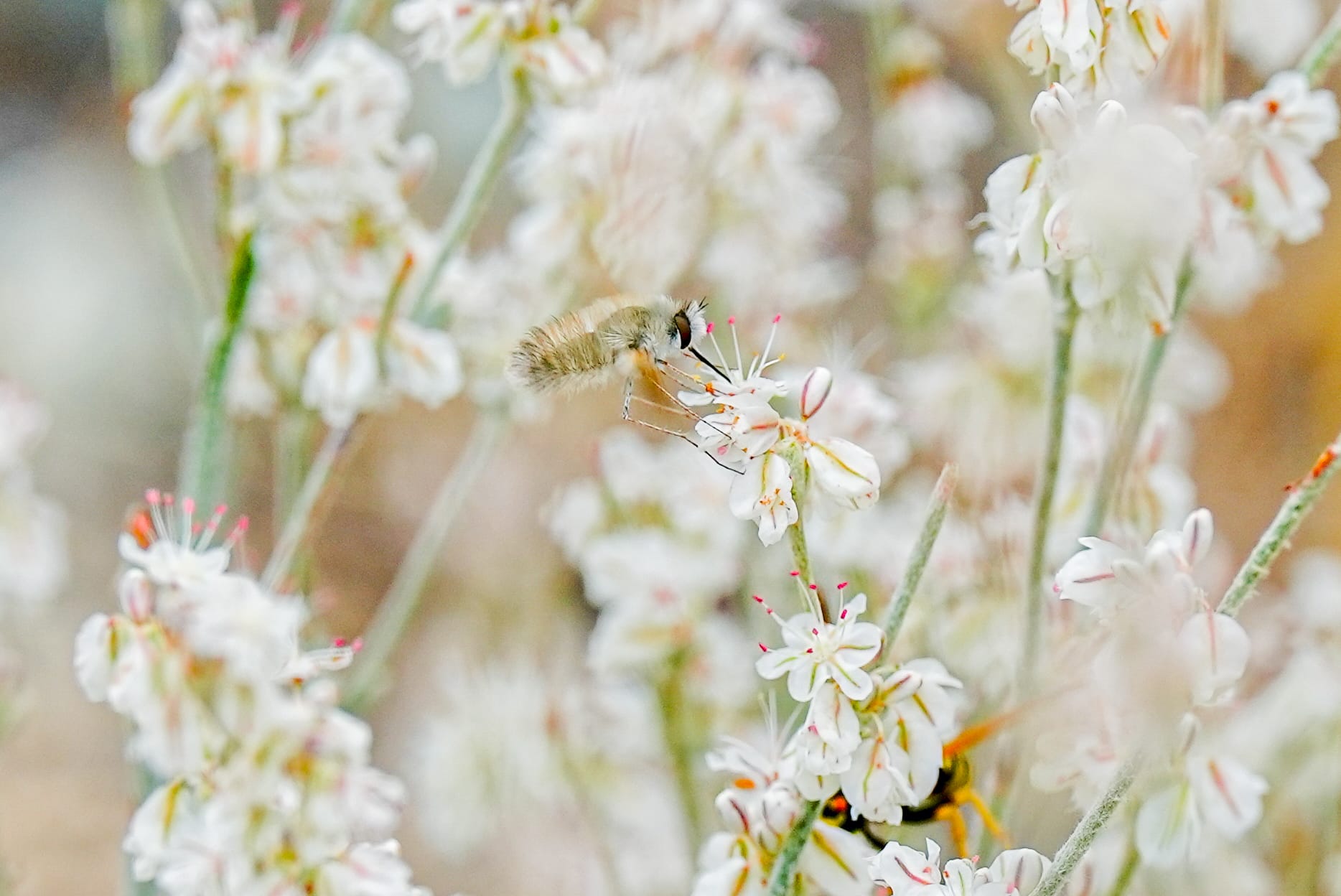
Watch closely the next time you see a bee fly zipping determinedly from flower to flower because these expert fliers can perform some amazing aerial feats, including changing direction or starting and stopping on a dime. Some species also produce a bee-like buzzing sound, but unlike bees (and hover flies), bee flies continue hovering as they sip nectar and pollen from flowers. On the occasions when they stop to rest, bee flies frequently rest on, or near, the ground.
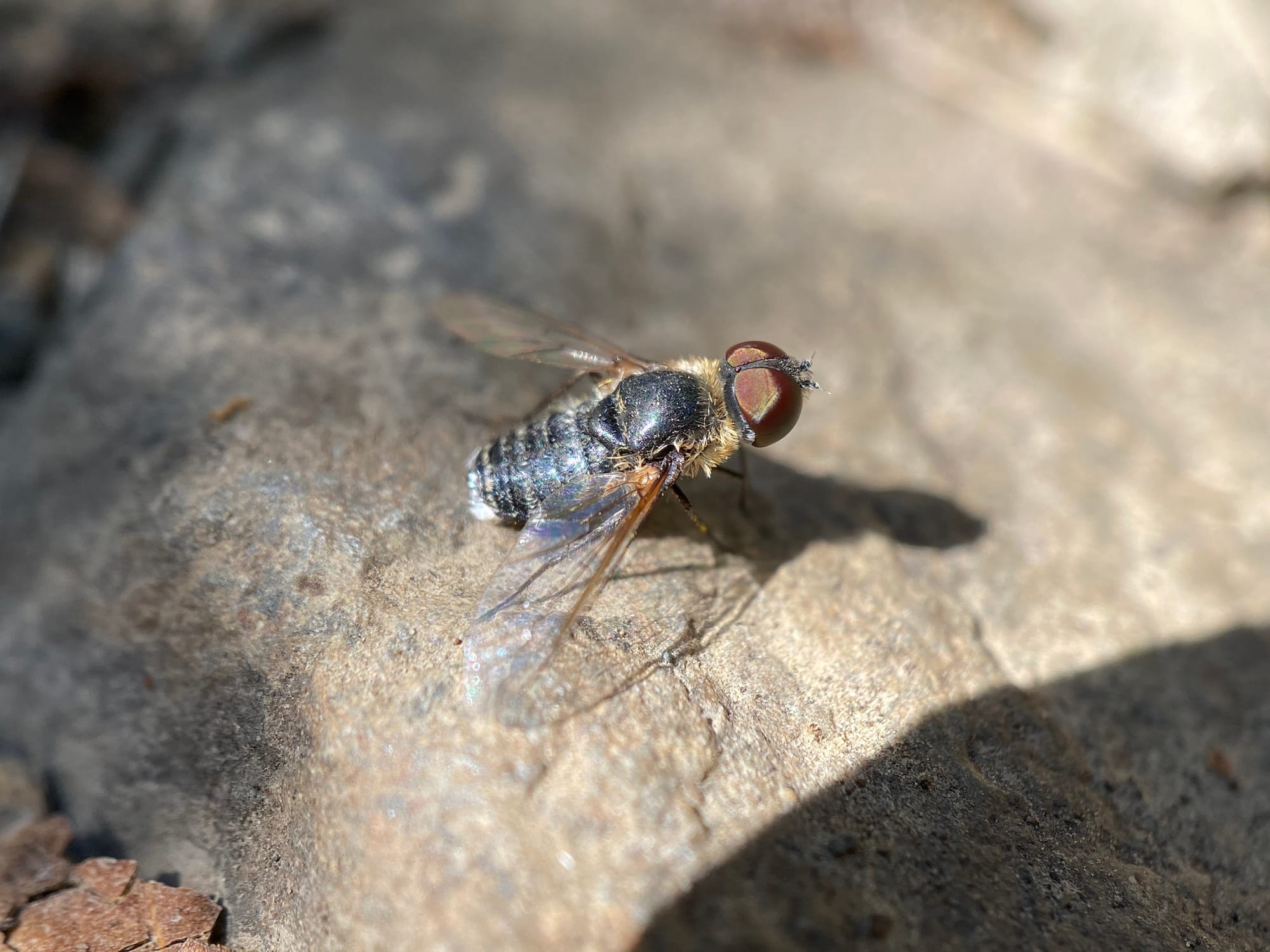
You are also likely to see bee flies hovering. Males hover while guarding and surveying their territories, and females hover while laying eggs. Bee flies parasitize other insects like solitary bees, beetles, antlions, and butterfly caterpillars, and female bee flies will hover while searching for and waiting to deposit their eggs on or near their intended targets.
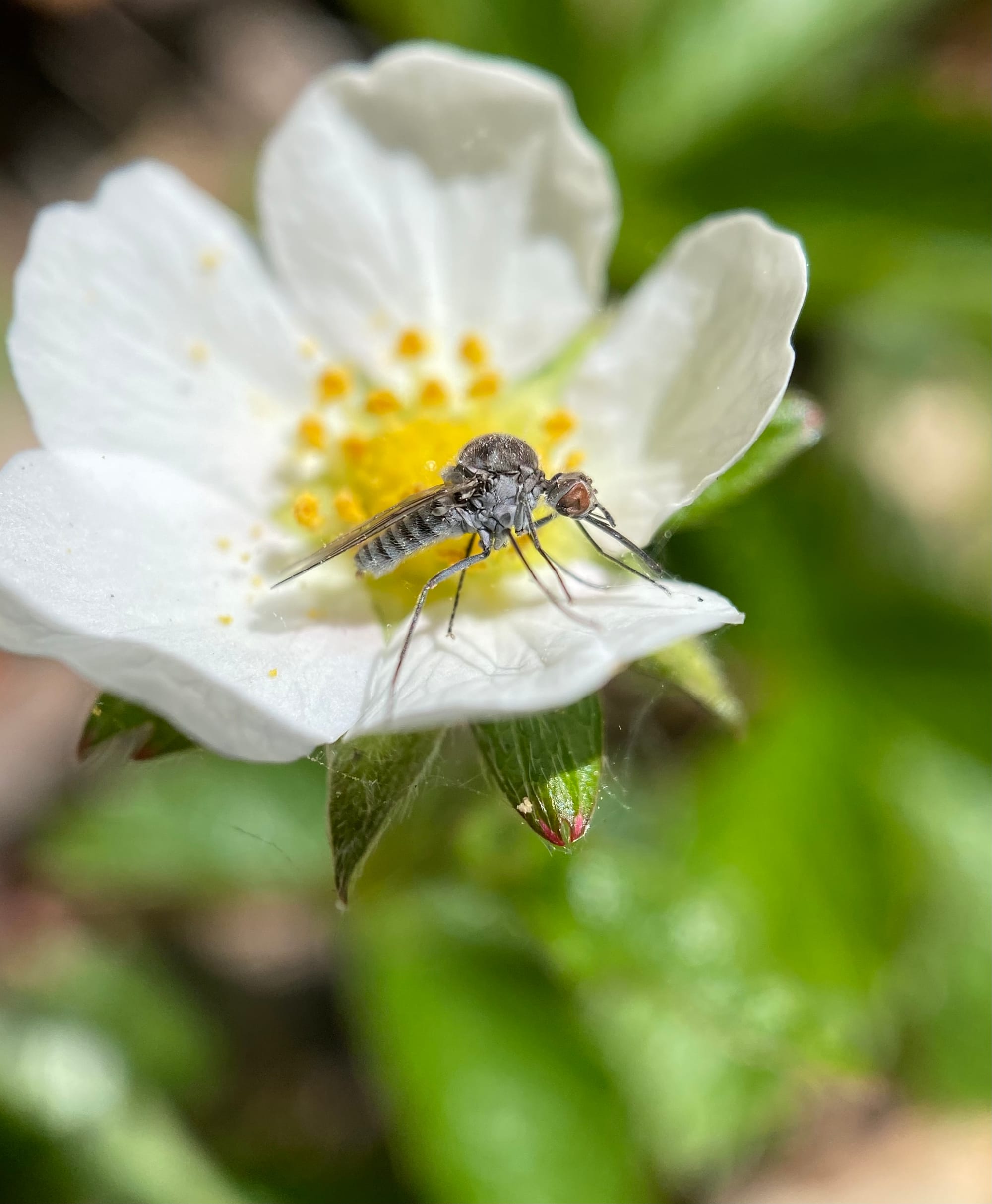
While some bee flies extensively target grasshopper eggs, the most common hosts are solitary, ground nesting bees. Female bee flies watch closely as solitary bees excavate their underground nests and make repeated trips to and from the nest to gather pollen for their larvae to eat. During these brief absences the hovering bee fly will drop (or fling!) her eggs towards the nest entrance.
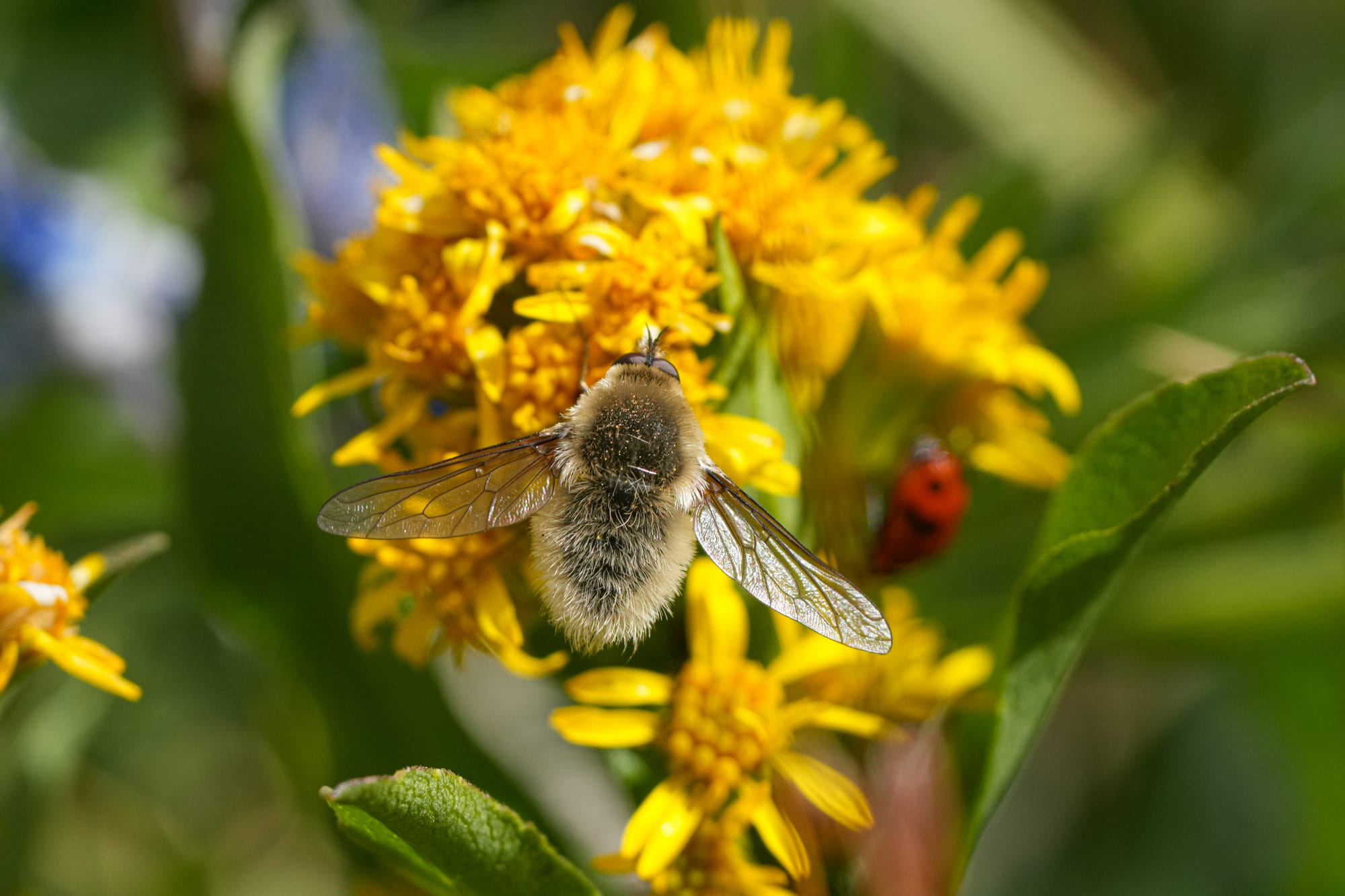
Many bee flies even have a special chamber at the tip of their abdomens where they scoop up and store sand, then when they lay eggs they coat each egg with sand to disguise its odor and to give it enough weight to fling or drop towards the nest. One researcher describes this as "carpet bombing" and laying eggs quickly is critical because there are also other flies and wasps trying to parasitize the same solitary bees.
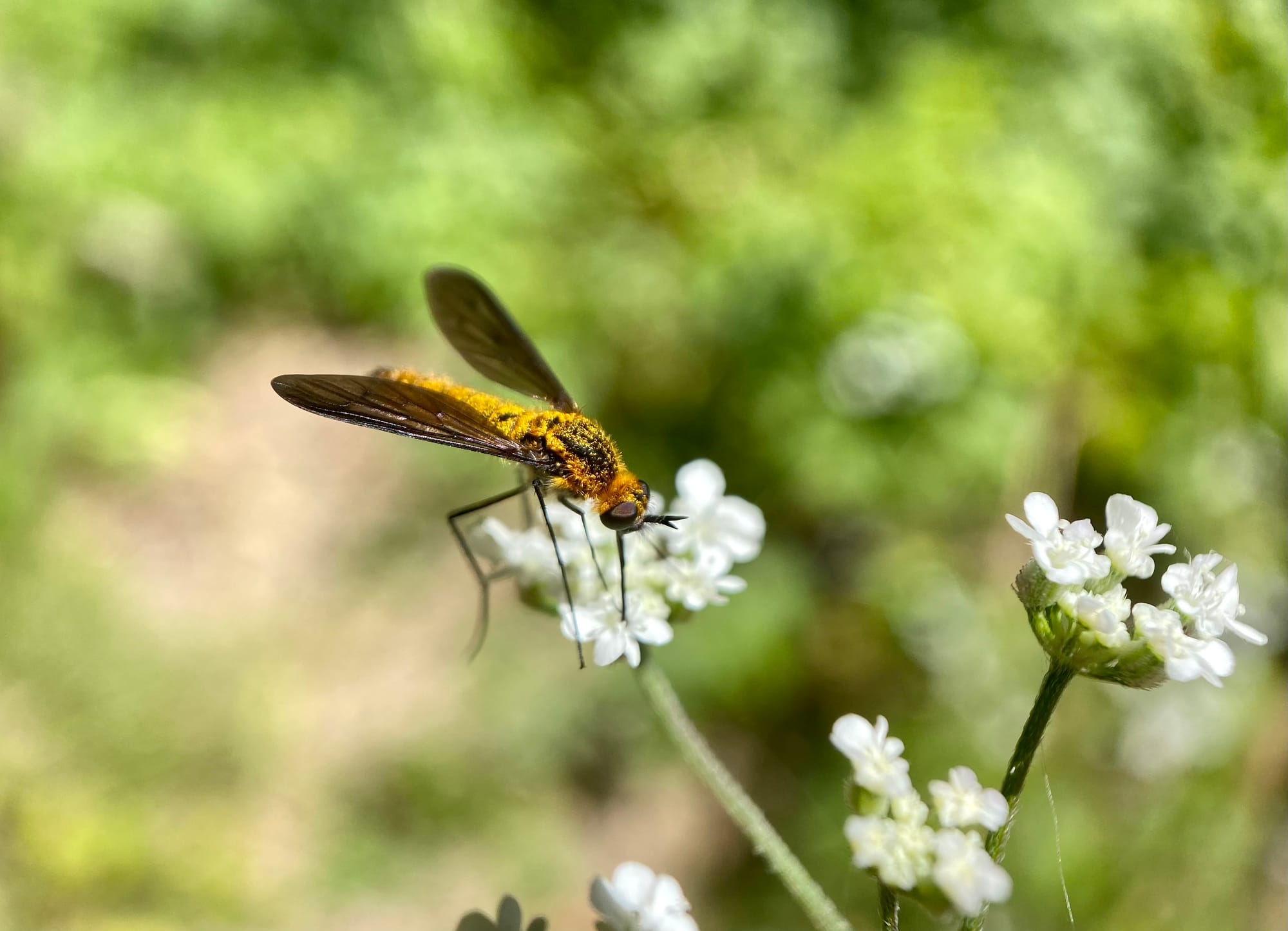
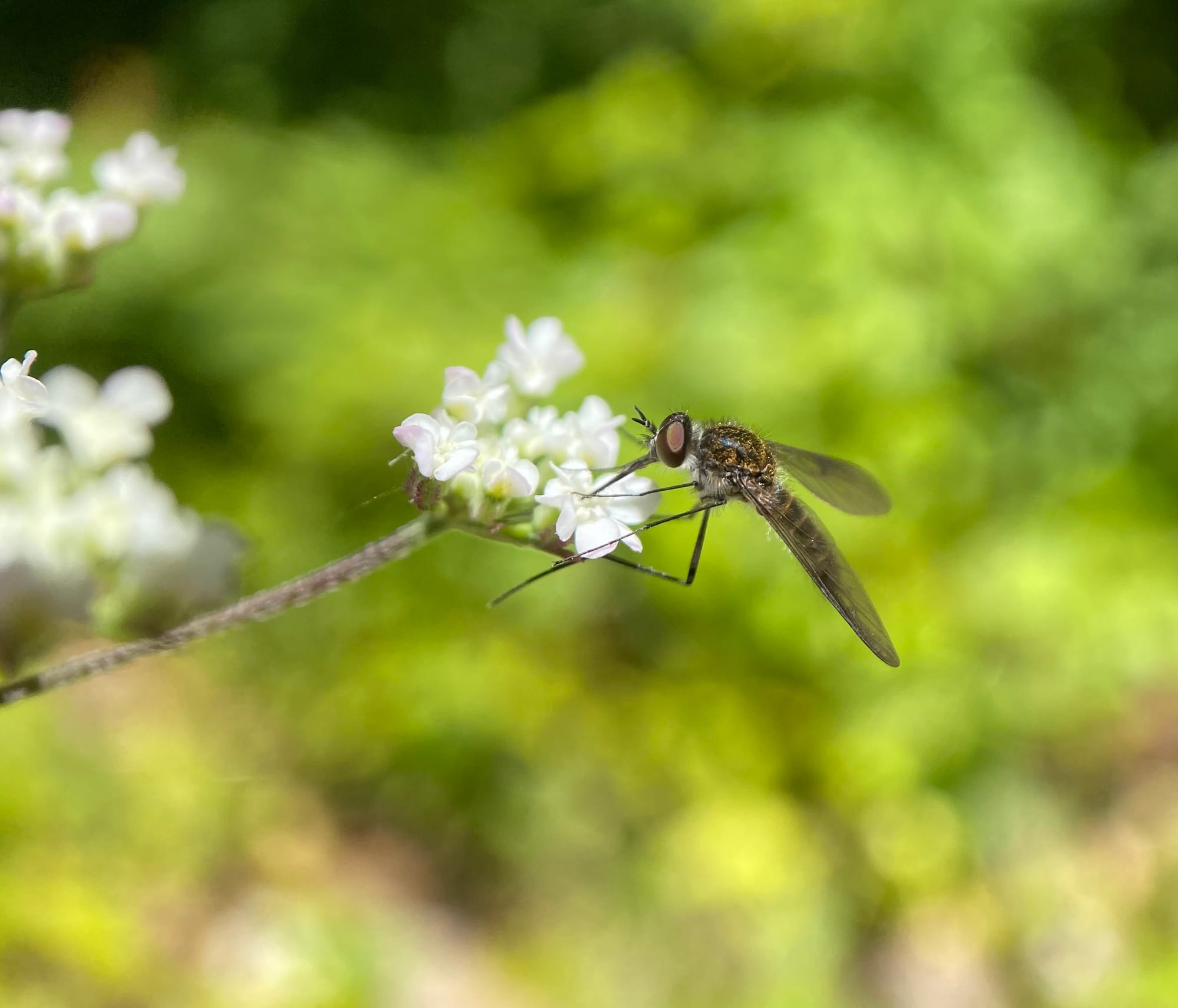
Female (left) and male (right) of the same species in the genus Thevenetimyia. Photos by May Chen
Bee fly larvae then go through a rare two-stage metamorphosis known as hypermetamorphosis. They start out as tiny wormlike creatures that devour the pollen stored for the host larvae, then morph into maggot-like grubs that feast on the host larvae itself before pupating in the host's nest and emerging the next spring.
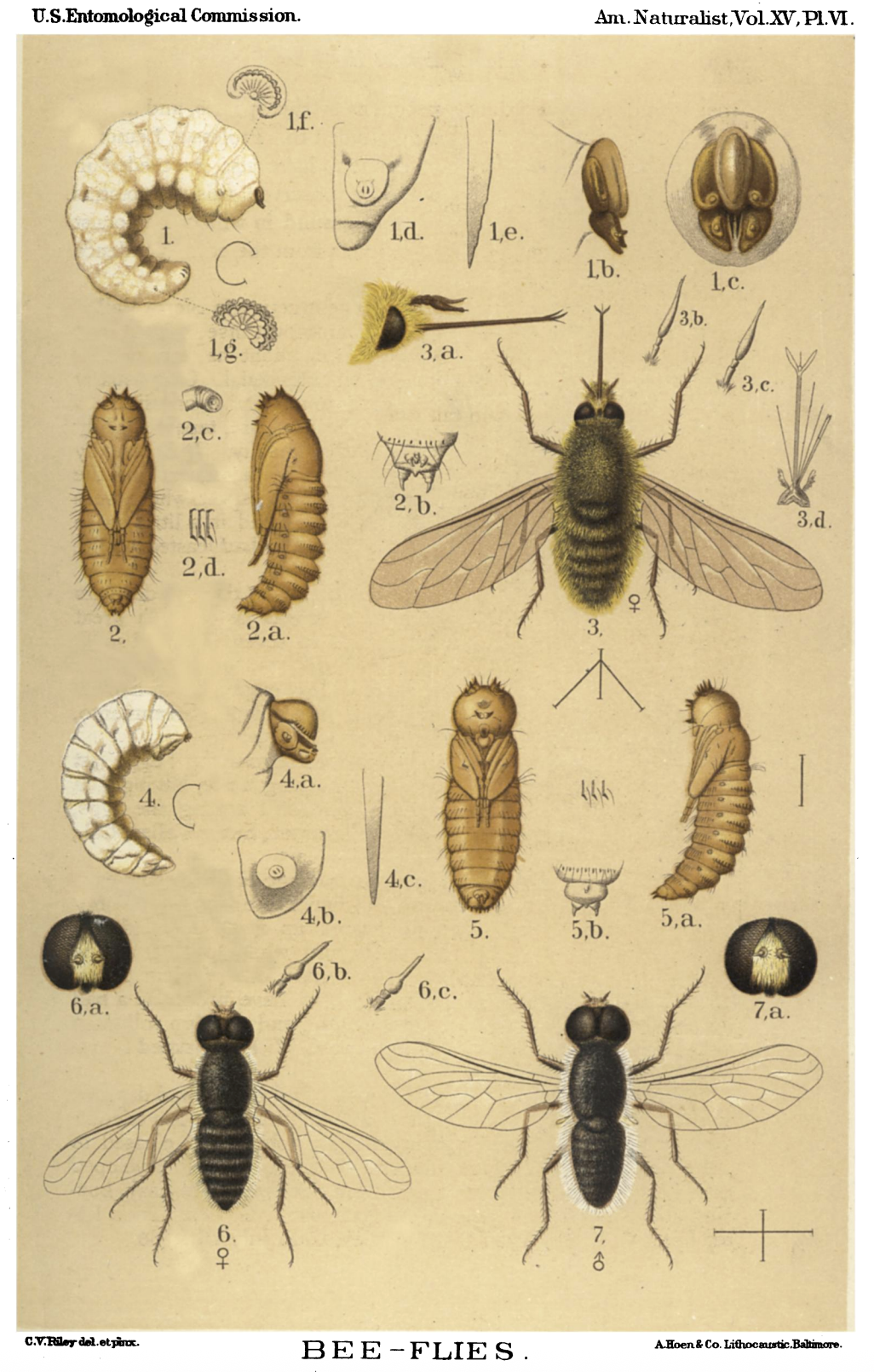
I have to admit that until I started researching today's newsletter I had never given bee flies much thought. I hadn't realized they lead such interesting lives, or play such important ecological roles. Now I'm going to be paying a lot more attention to bee flies, and I hope you do too.
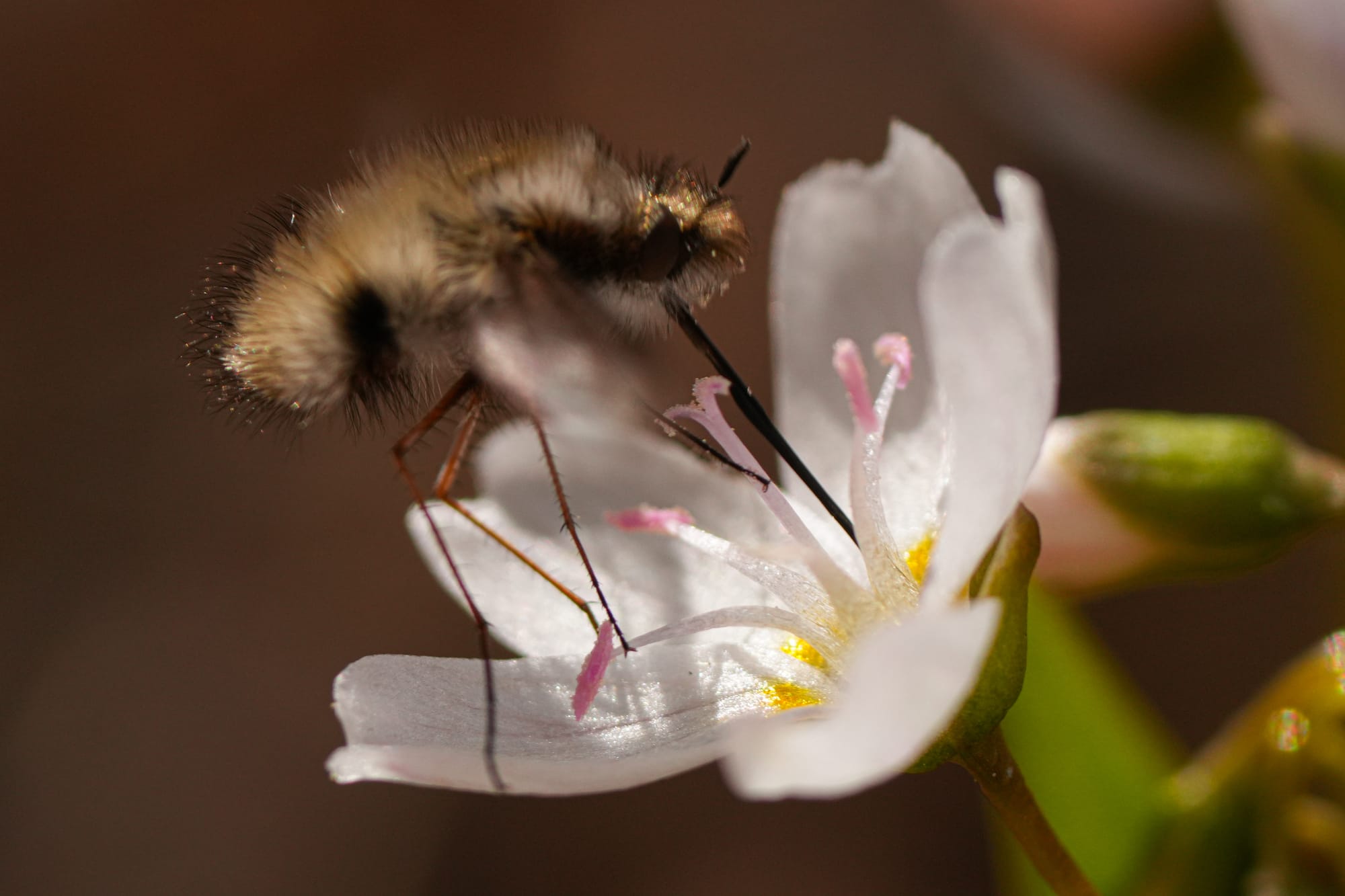
Further Reading
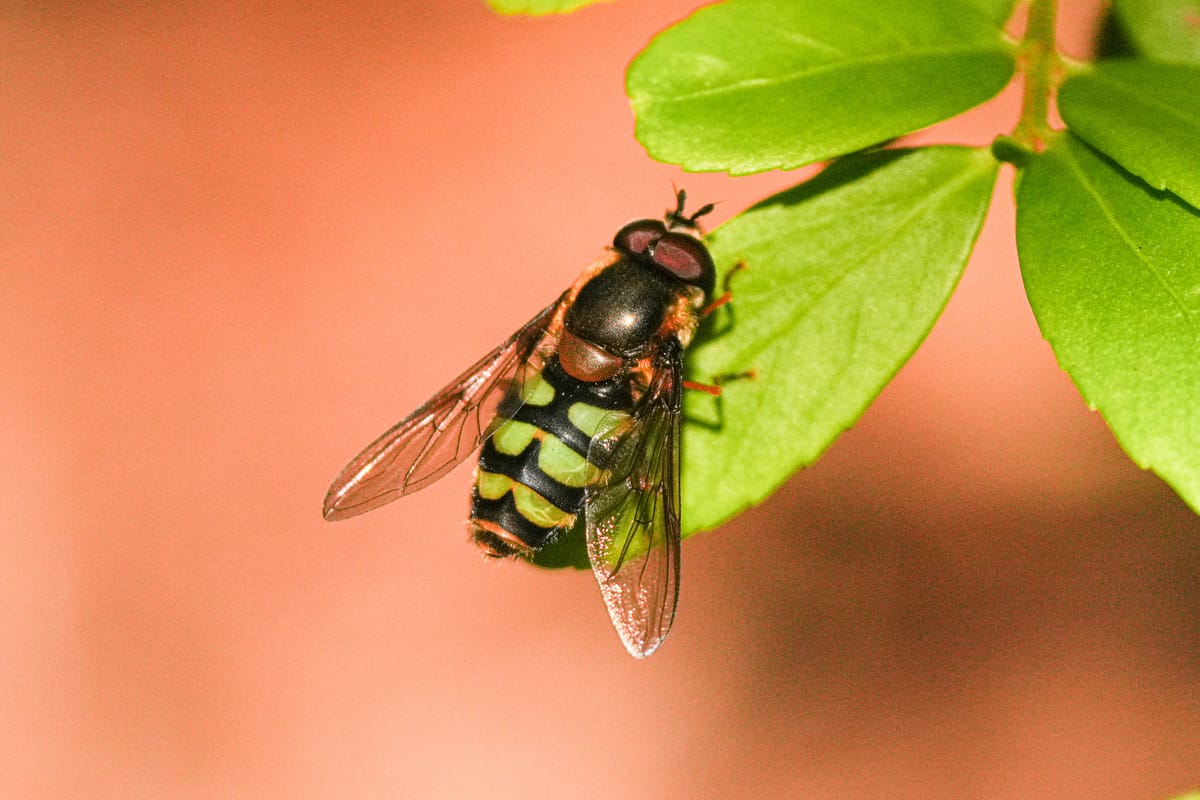
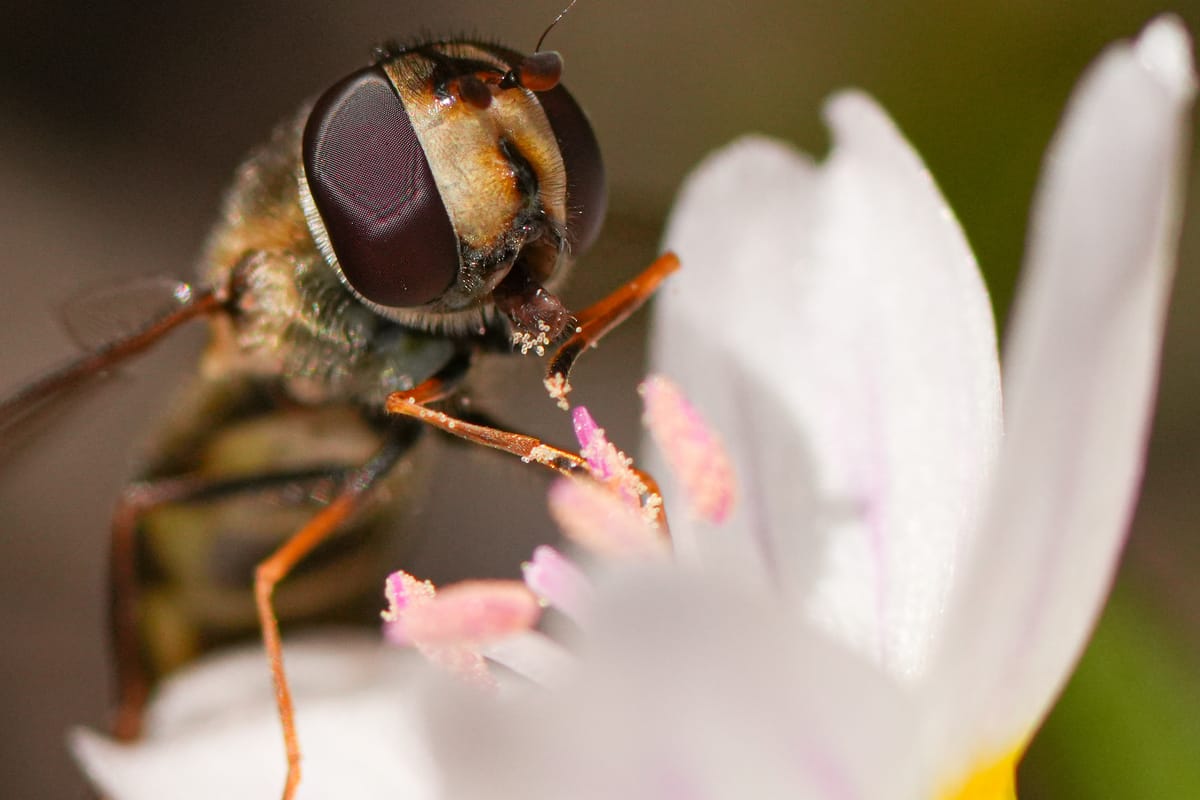



Member discussion